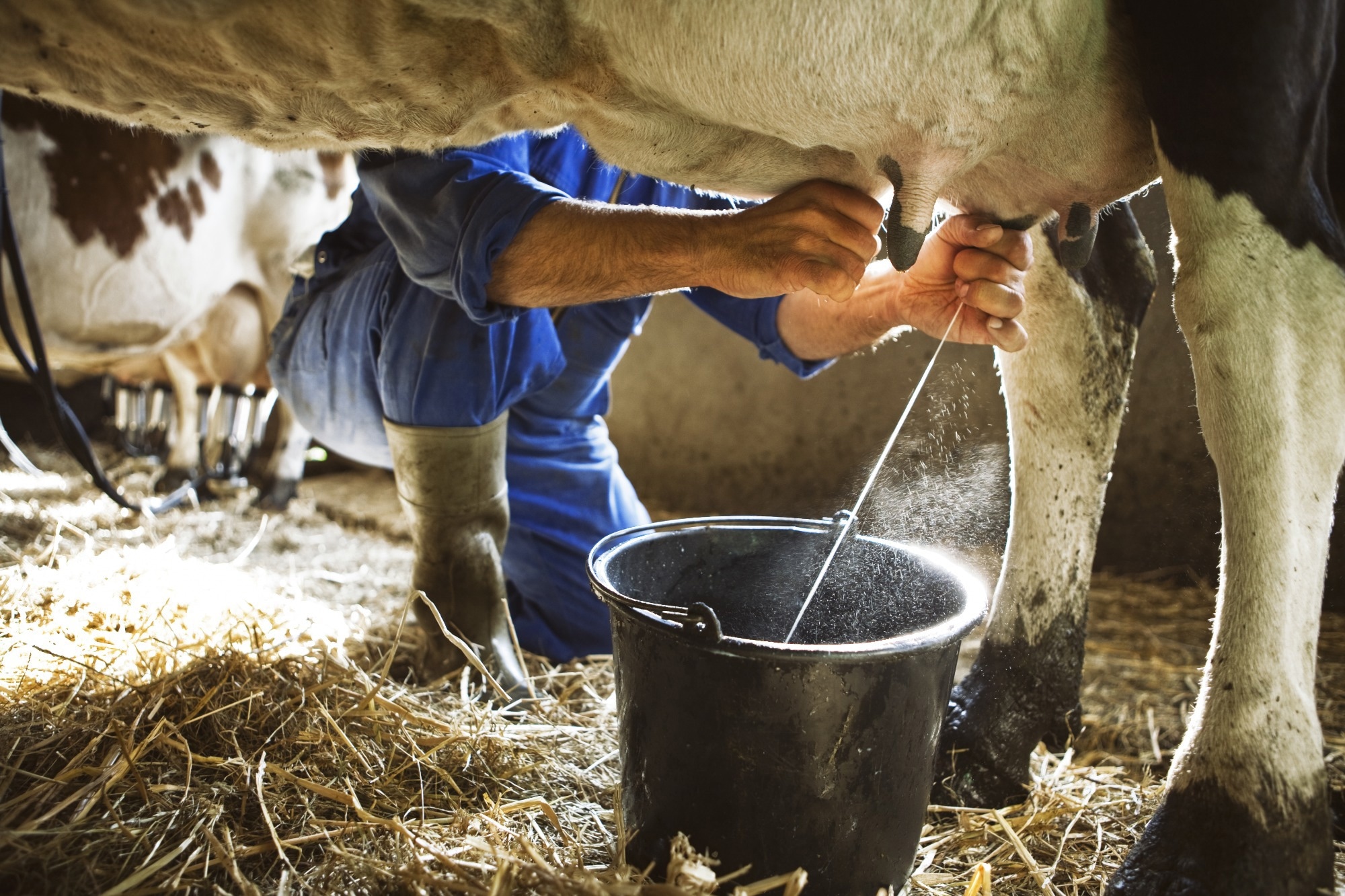They also evaluated whether the transgenic cow generated through somatic cell nuclear transfer of modified bovine fibroblasts using the lentivirus vector expressed proinsulin in its milk.
 Study: Human proinsulin production in the milk of transgenic cattle. Image Credit: Zacchio/Shutterstock.com
Study: Human proinsulin production in the milk of transgenic cattle. Image Credit: Zacchio/Shutterstock.com
Background
Diabetes is one of the most prevalent metabolic diseases in the world, with estimates from 2021 indicating that over 500 million people in the world have either type 1 or type 2 diabetes, and the numbers are expected to increase significantly in the next two decades.
Type 1 diabetes is due to insulin deficiency, which is most often autoimmune in nature and caused by the destruction of the β-cells in the islets of Langerhans in the pancreas. Type 2 diabetes is due to insulin resistance and its subsequent impact on insulin secretion by the pancreatic β-cells.
Insulin for human therapy has been produced using model organisms such as Escherichia coli, yeast, and transgenic mice. Insulin production in E. coli involves the separate generation of A and B peptide chains and recombining the two to form biologically active insulin.
In yeast and E. coli, insulin is also produced in the form of mini-proinsulin, while in transgenic mice and yeast, it is produced as proinsulin.
About the study
In the present study, the researchers developed a transgenic cow carrying insulin genes inserted using lentiviral vectors with mammary gland-specific expression to produce proinsulin in milk.
They then used mass spectrometry and Western blotting techniques to evaluate the human proinsulin production by this transgenic cow.
Transgenic animals provide a viable option for the large-scale production of recombinant proteins, and the use of mammary gland-specific promoters can help manipulate the expression of these recombinant proteins in milk.
Furthermore, since cows have a long lactation period and produce large amounts of milk, transgenic modification of cows to express recombinant proteins is advantageous.
The somatic cell nuclear transfer process involves inserting the nucleus from specific modified cell lines into embryos to produce transgenic animals, especially livestock.
An in vitro screening process ensures that only those cells that have successfully been transduced or transfected by the vector are used for the nucleus transfer.
Here, the researchers constructed a lentiviral vector with mammary gland-specific expression and carried the gene coding region for human insulin along with a promoter of the bovine β-casein gene.
This vector was transduced into immortalized mammary epithelial cells and bovine fibroblasts, after which in vitro evaluation of the immortalized mammary epithelial cells ensured successful gene expression from this vector.
The nuclei from the transfected bovine fibroblasts were then inserted into the nucleus of cow embryos to produce a transgenic cow.
To evaluate the proinsulin expression in milk produced by this transgenic cow, it was hormonally induced to lactate, and the collected milk was analyzed using Western blotting analysis and mass spectrometry.
Results
The study found that the milk produced by the transgenic cow contained more human insulin than proinsulin and the presence of protease enzymes, which could convert the proinsulin into insulin.
Furthermore, other insulin-degrading enzymes that could potentially break down the recombinant protein were also found in the milk.
The Western blotting analysis revealed two bands, with molecular masses of the bands corresponding to insulin and proinsulin.
The findings indicated that the expression of the recombinant protein was lower than that of other milk proteins. However, the study also established the efficiency of mass spectrometry as a method to detect low-level expressions of recombinant protein in milk.
The researchers found an abundance of bovine insulin-degrading enzyme peptides, which they believe could have played a role in the low concentrations of proinsulin in the milk produced by the transgenic cow.
The researchers believe that while the protease enzymes in milk could convert the recombinant proinsulin protein into functional insulin, they could also degrade the proinsulin protein.
Conclusions
Overall, the findings suggested that although mass spectrometry and Western blotting did find proinsulin and insulin in the milk produced from the transgenic cow, their concentrations in milk were lower than that of other milk proteins.
The presence of protease enzymes was believed to be a possible cause for the low proinsulin concentrations since these enzymes could have either degraded the recombinant proinsulin protein or converted it to insulin.
However, these findings highlight the potential use of transgenic cows to boost human insulin production to treat the rapidly growing global health concern of diabetes.
Journal reference:
-
Monzani, Paulo S, Sangalli, J. R., Sampaio, R. V., Guemra, S., Zanin, R., Adona, P. R., Berlingieri, M. A., Luiz, C., MoraOcampo, I. Y., Pirovani, C. P., Meirelles, Flávio V, Wheeler, M. B., & Ohashi, O. M. (2024). Human proinsulin production in the milk of transgenic cattle. Biotechnology Journal, 19(3), 2300307. doi: https://doi.org/10.1002/biot.202300307. https://analyticalsciencejournals.onlinelibrary.wiley.com/doi/10.1002/biot.202300307